Problem Banks Increase Again
The latest FDIC Quarterly Banking Profile shows a 10% increase in the number of Problem Banks to 775 at March 31, 2010, up from 702 at December 31, 2009. Although industry trends show improvement over previous quarters, almost 19% of all banking institutions reported net losses for the quarter, down from 22% a year earlier. According to FDIC Chairman Sheila Bair, “There are encouraging signs in the first-quarter numbers. Industry earnings are up. More banks reported higher earnings, and fewer lost money.” In addition, the Chairman noted that the latest quarterly net profit of $18 billion “is more than three times as much as banks earned a year ago, and it is the best quarterly earnings for the industry in two years.” Return on assets rose to .54% from .16% last year, the highest return on assets since 2008 first quarter.
The banking industry may be showing signs of improvement but given the large number of problem banks, the industry is far from a full recovery. Since 41 banking institutions failed in the first quarter of 2010 and have moved from the “Problem Bank List” to the “Failed Bank List”, there has been a not inconsiderable increase of 114 new banking institutions added to the Problem Bank List in the latest quarter. In addition, almost 10% of the total 7,932 FDIC insured institutions are now on the Problem Bank List. Banks classified as “problem banks” generally have a weak capital position and a high likelihood of failure, especially if economic conditions worsen.
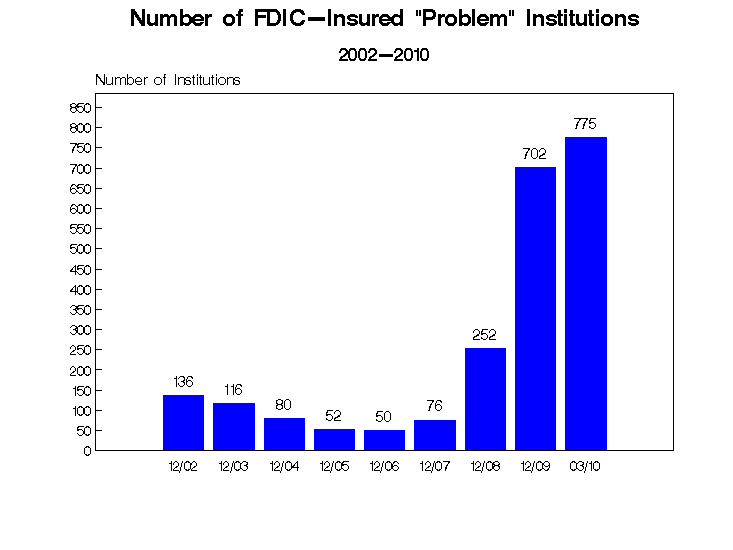 Assets of Problem Banks Increase
Assets of Problem Banks Increase
Problem Bank assets increased by $28.4 billion over the previous quarter, reflecting the net addition of 73 banks to the Problem Bank List. Although the largest banks have been reporting large profit increases and have increased their capital positions significantly, smaller and midsized banking institutions remain under duress. This can be seen in the latest numbers on the increase in problem bank assets. Based on the net addition of 73 banks to the problem bank list, an approximation of asset size of banks added to the Problem Bank List averaged only $383 million.
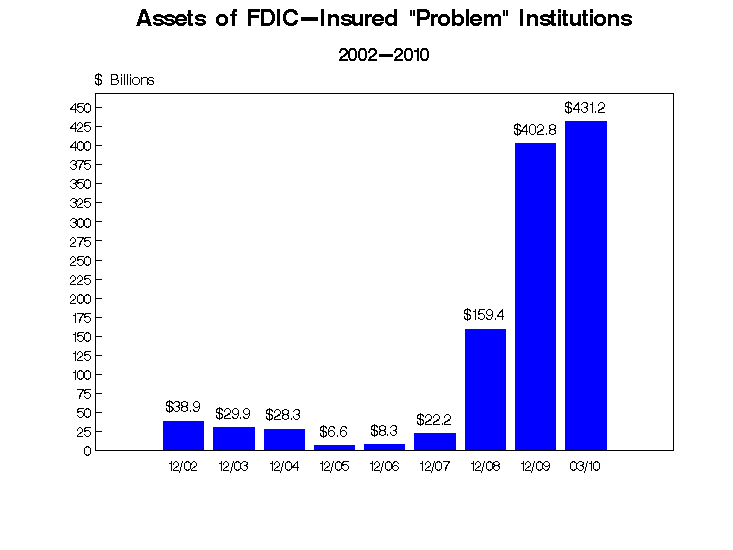 Banking Income Shows Tentative Rebound
Banking Income Shows Tentative Rebound
The latest quarterly banking industry profits seemingly point to signs of a turnaround. However, the major contributors of the banking industry’s first quarter profits were earned by the biggest banks and in many cases, the majority of bank earnings were derived from “trading operations” and not core banking activities. As can be seen below, a significant factor for increased earnings was due to a decrease in loan loss provisions. Although the quarterly change in noncurrent loans has decreased from previous quarters, there was still a net increase in noncurrent loans for the quarter of $17 billion. In addition, the coverage ratio for noncurrent loans is still dramatically below historical norms.
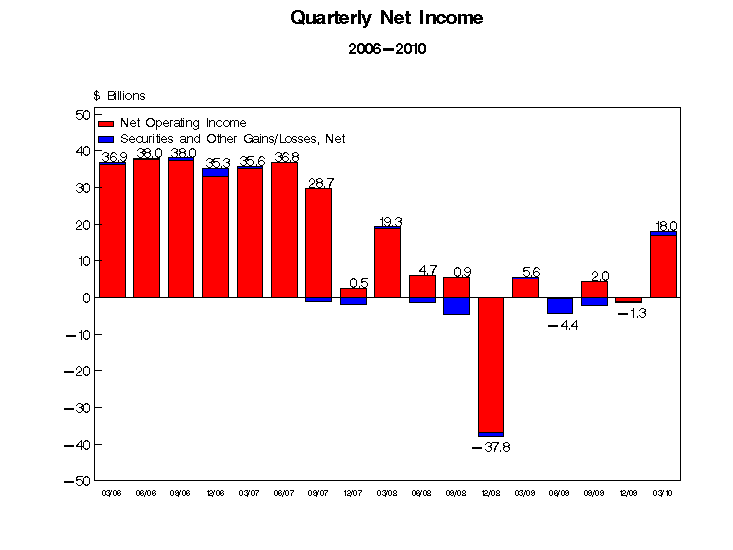 Factors Affecting Earnings Increase
Factors Affecting Earnings Increase
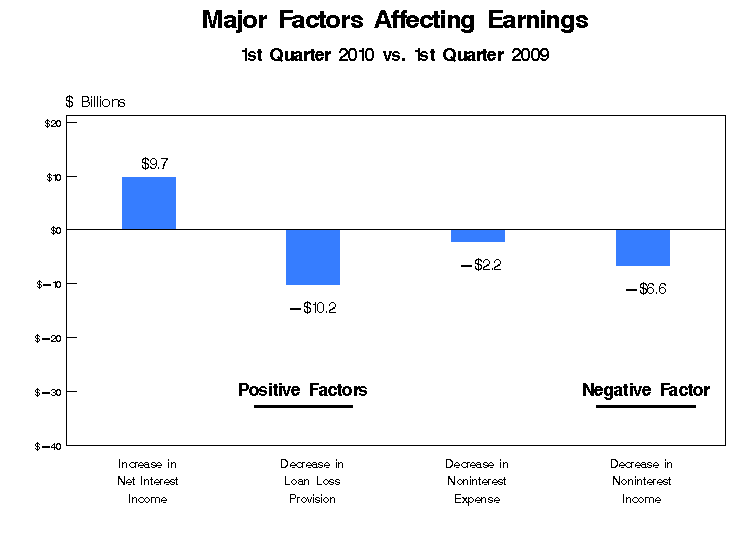 Reserves Trail Noncurrent Loans
Reserves Trail Noncurrent Loans
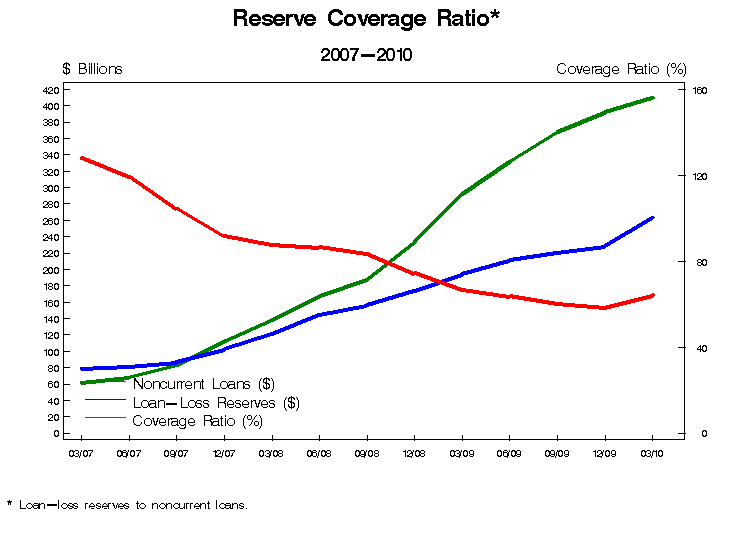 Increase In Noncurrent Loans Show Slower Rate Of Growth
Increase In Noncurrent Loans Show Slower Rate Of Growth
Although asset quality trends have improved, the amount of loans and leases that are noncurrent (in nonaccrual status or past due 90 days or more) rose to 5.45% in the quarter, up from 5.38%, the highest level in 27 years of reported data.
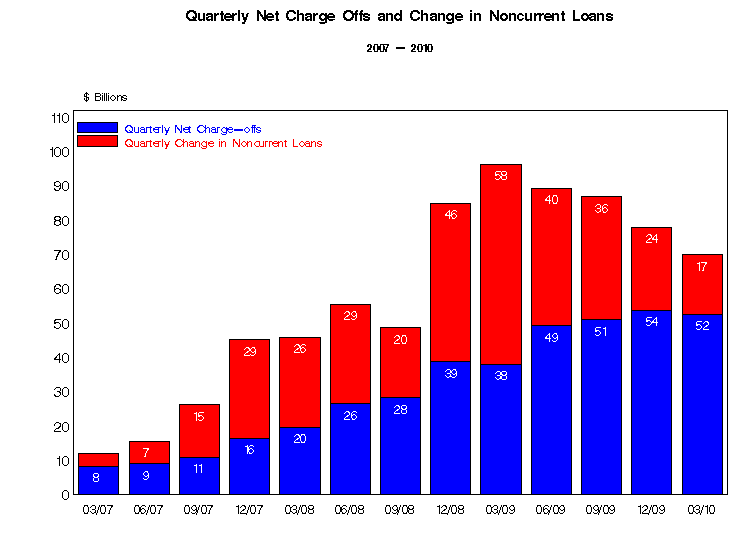
FDIC Deposit Insurance Fund (DIF) At Negative $20.7 Billion
The FDIC DIF improved slightly in the quarter to negative $20.7 billion. Taking into account the $40.7 billion contingent loss reserve, the DIF has reserves of $20 billion. The DIF fund had been strengthened by a special FDIC assessment of $46 billion on the banking industry at the end of 2009. The FDIC presently has liquid resources of $63 billion at the end of the quarter, a truly immaterial amount considering that the FDIC Insurance Fund presently insures $5.5 trillion of deposits.
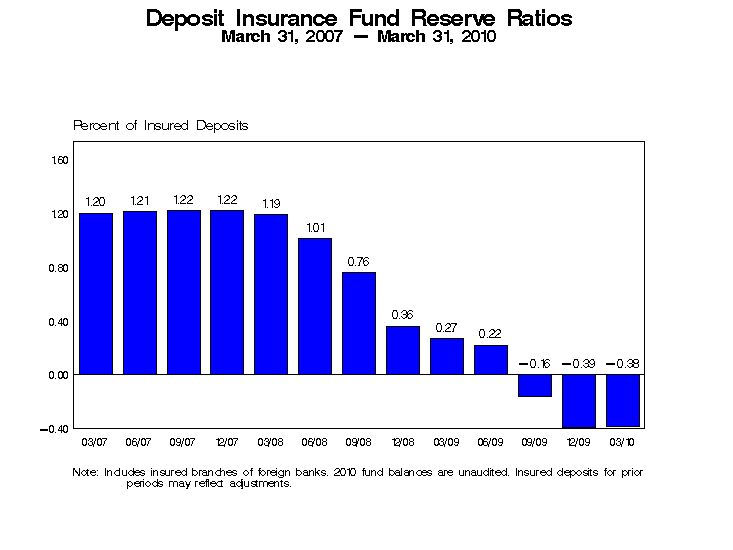
Speak Your Mind
You must be logged in to post a comment.